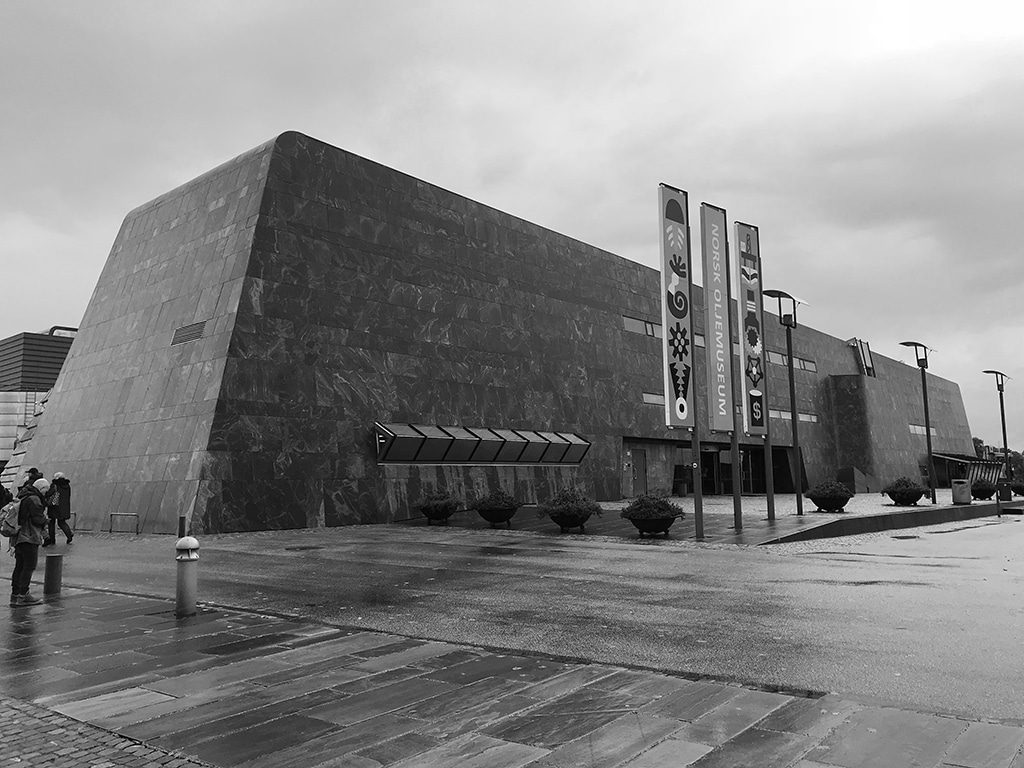Dale Wragg looked at the beachside Viking graveyard with an eyebrow raised in disappointment. Even though he’d been warned that the graves at Nærbo were “just some rocks,” he didn’t expect it literally. The Viking graveyard was so… what was the word? Unceremonial. Dale clawed some sand off the back of his neck as he crouched down, surveying the short rock mounds and flickering grass. Nearby there were birds on a spiral outcropping and a white lighthouse in the distance, everything softened by grey sky. He realized it’d been about five years since he visited his parents’ graves even though they were just outside Tallahassee. The last time there he’d searched for their flat headstones for 45 minutes till he finally saw that a big wad of Spanish moss had fallen on them. Meanwhile, these dead Norsemen on this chilly beach had no plaques, just piles of rocks. Dale didn’t know yet that Vikings buried chieftains with their vessels.
After a short drive in his little rental car he arrived at another beach. A wooden walkway snaked and undulated through tall dunes covered completely in grass. Marking the final dune before the beach was a pelican skeleton half covered in sand. At the crest of the dune, Dale saw the North Sea roiling onto shore, the sun cold and bright, a giant black curtain of storm far out at sea. When Dale first came to Stavanger the weather had been beautiful. It was the end of summer and everything was bloomed and bathed in gold. People fed the swans at Breiavatnet lake by an old cathedral in the center of town.
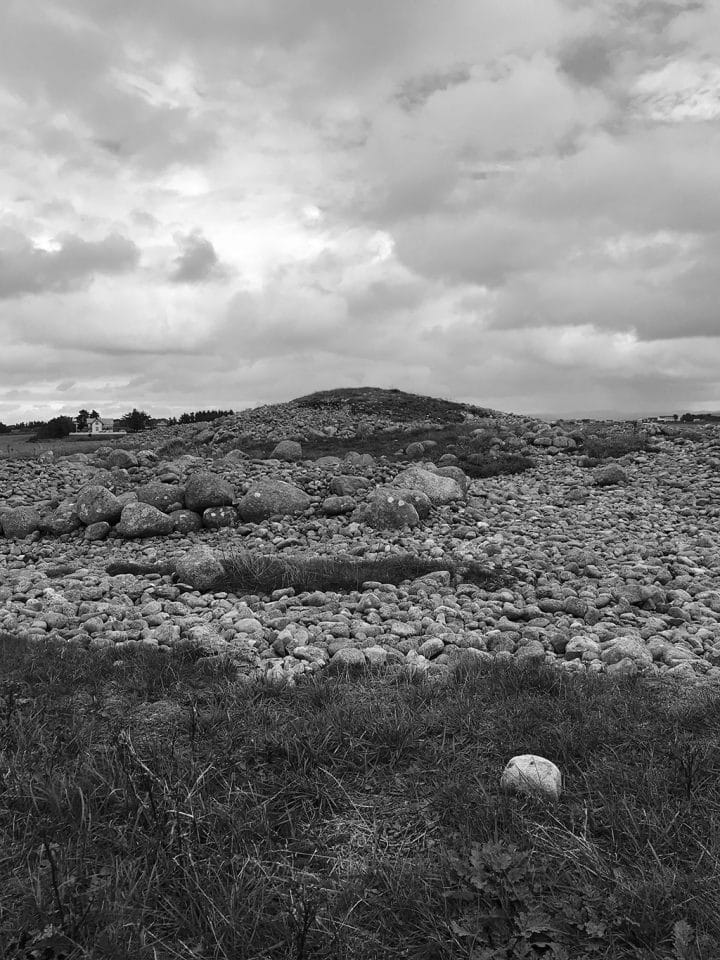
The first few days were especially a reprieve since, before he left, things hadn’t been great between him and his wife Dawn. A few small but significant fuck-ups had transpired back home: First, after forgetting to pay the bill six months straight, the water was cut off during her morning shower, mid-lather, right before a job interview. Two weeks later, looking to replicate some sort of pre-marriage sensation, Dale jerked off with a condom on, and in an absent-minded rush to get back to the lawn, he’d left it on the living room couch. The flash of terror when he remembered – right as she walked in the front door, arms full of groceries – nearly knocked him off his rider mower. The transatlantic distance however had helped patch things up.
Dale was in Stavanger on assignment. He worked for the Florida Petroleum Commission, a lobbying firm that advocated – unsuccessfully, so far – for oil and gas drilling in the state. They called it a firm, but really it was just Dale, his boss Bud, and a funneling herd of FSU undergrads. Bud had sent Dale to “research” the economic benefits of offshore drilling on Norway’s economy and how Florida might follow the same model. But the conclusion was already cooked up: Norway had a trillion-dollar sovereign wealth fund, and when placed next to each other on a Powerpoint presentation or marketing mailer, the shapes of Florida and Norway bore some resemblance.
Watching the curtain close in on the shore, Dale felt dread at the idea of working the next day. The weather had suddenly changed. It was now days of unending, light and torturous rain. Very unlike brief Floridian thunderstorms, these rains became a wall between Dale and everything in his life. Also, Dale was sick of Bud. Bud, with his greasy brown widow’s peak and thin lips, peering at Dale with small, condescending eyes, telling him to write up last-minute reports about sanctions compliance or the newest safety measures. And always on the weekends when Bud had a Gators game or a golf appointment in Suwannee County. Taking care of Bud’s incontinent Chihuahua before Dale left for Stavanger was particularly disheartening, the cherry on top. When the poor dog leaked on the oriental rug in their Florida room, Dale foolishly tried defending his subservience to Bud while Dawn yelled at him. Even though the terrazzo floor was warm, his feet went cold at the truth: “Wake up Dale! You’re his little bitch!”
Dale plopped down on the sand and watched a helicopter in the sky. A Norwegian, around the same middle-age as Dale, who was known for casually walking thousands of miles of Norwegian coastline, was reported missing a few days before. The old man’s SIM card had been traced to the area, but search and rescue saw no one around except for Dale.
Back in Stavanger a frosty afternoon mist hung in the air. After parking at his apartment Dale walked down Badehusgata, under the towering Bybrua bridge where a man-made lake was fitted with a sad slide. Then down the wide pedestrian walkway with two roads on either side. On the right was the bay, where stout black-and-orange supply vessels floated mutely, and dozens of still sailboats. Dale came upon the Norsk Oljemuseum, which, strangely, Bud hadn’t included in the sites Dale should visit. The building, a massive funereal rectangle with rounded edges, had the grave monumentality lacking at the Viking cemetery.
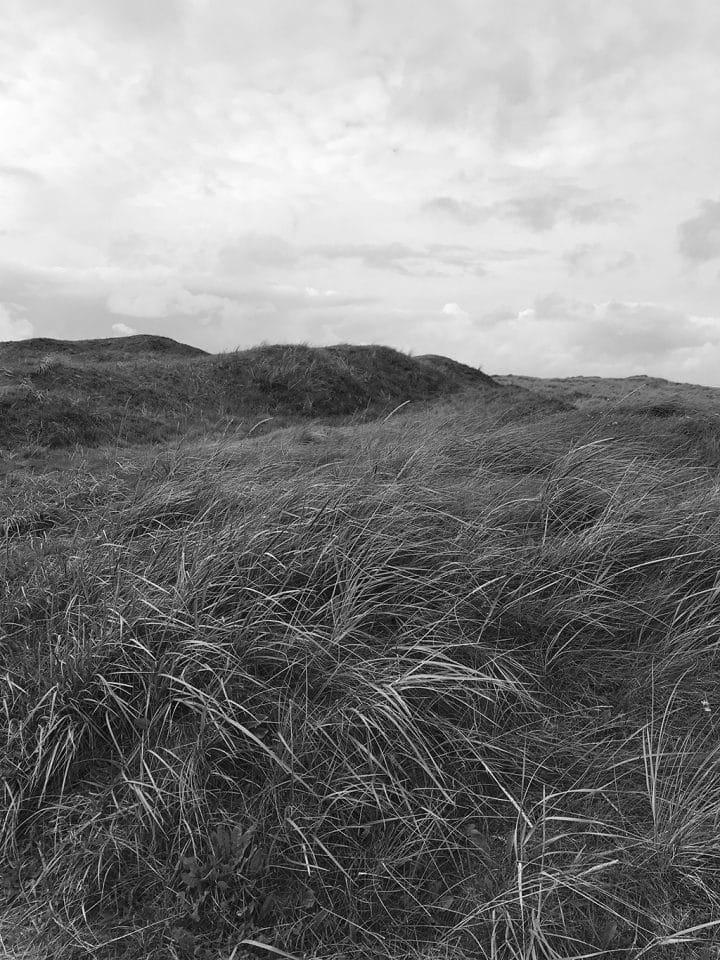
The floor of the oil museum was made of an intensely black slate meant to mimic the color of oil. It reminded Dale of a bottomless pit. The cavernous hall’s exhibits included 6-foot-tall model oil rigs, massive drill bits placed on plinths, lifeboat capsules and diving suits visitors could try on, and lots and lots of wall texts. Dale thought he knew the oil industry, but his knowledge (like any) was just a sliver of the whole, an abstraction, a kinda pathetic series images and memories. The giant drill bit was particularly unnerving—the thing was way bigger than Dale had ever imagined.
The first text display he read had an image of the Earth squeezed between a wrench-like tool. “Humans affect the climate through greenhouse gas emissions.” What? Dale’s whole face squinted in confusion. “Burning fossil fuels such as coal, oil and gas liberate large volumes of carbon dioxide, which contribute to global warming.”
Dale thought himself an apolitical person, but in reality, he’d adopted many of the ideological habits of his southern conservative parents – barring his post-hippie phase while a kid in the seventies. When it came to global warming, Dale mostly just tuned out that discursive frequency and decided to ignore it. But this text irked him. “Climate change is the greatest challenge of the present age.” How could Norwegians psychically accept global warming as fact and that petroleum was a direct cause while also building their entire economy upon it? Something about this acknowledgement of complicity got through to Dale more than any argument he’d heard before. He stared for some time at the Earth squeezed between the wrench.
Walking on, the sound of Norwegian language all around set his mind down a confused path. Dale’s heartrate quickened and an uncomfortable warmth started radiating from his throat. While looking at an interactive map of a pipeline system, a explosive blast made Dale jump and spin around. It came from a 20-foot cylindrical tank of water that held some kind of canon used in drilling. Standing at the red button was a fair-complexioned Nordic girl, about six years old, in messy ponytails, laughing. Dale’s chest felt like it was screwed on too tight, his pulse loud in his ears. Wiping sweat off his brow, Dale started to feel truly unwell. Not wanting to waste the krones he’d spent, he walked up to one final display. “Do you think oil comes from dinosaurs?” Dale had always thought that oil—fossil fuels—came from dinosaurs. When he saw that it came from algae, something snapped.
Walking outside, Dale felt like his body was on fire. Sitting down on a bench, Dale leaned his elbows on his thighs and put his head between his knees. He’d never felt like this before, unable to just push away disturbing things. Suddenly he felt irrevocably alone, away from everything he knew and cherished, away from all his instruments for coping, ignoring, forgetting. Images of work life and home life coalesced into a black tunnel of fear and shame. Dale thought he was losing his mind, because he sorta was.
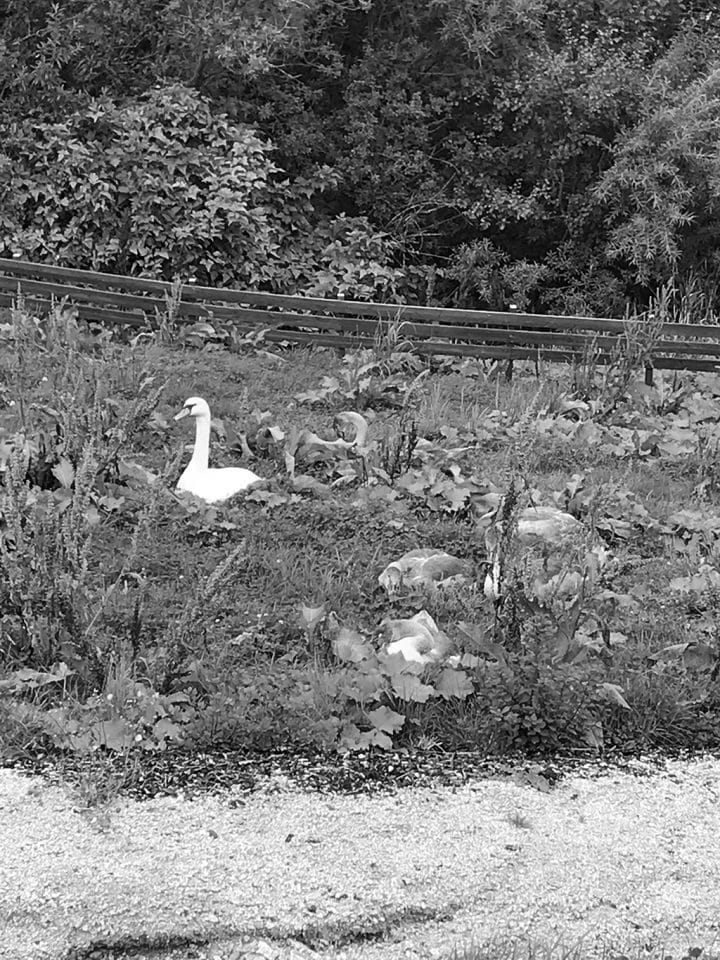
Figuring that walking would help, he headed into Stavanger Sentrum, the center of town. On the edge of the harbor sat A-framed wharf houses from the 19th century where herring used to get salted. Within Sentrum, there was a dense grid of skinny cobblestone streets, and paneled, white, one-story houses, converted into retail. Passing coffee shops and shoe stores, Dale eventually made it to Groovy Diner, where he figured he might ease his panic with two hot dogs. In days prior, he’d been able to relax there because it reminded him of being in America, an equation which suddenly didn’t add up.
The anxiety’s content shifted from work and home and worthlessness to one particular thought that he couldn’t dislodge, a thought that just kept cycling around and around: the local legend that there had been secret, first-class direct flights between Stavanger and Houston, back when offshore drilling revealed a bedrock of near-endless capital. The idea just kept tumbling around in his head, overtaking everything else. The tasteless food in his mouth, the vinyl booth under him, the bright wall collages of 1960s pop-culture ephemera, everything felt tertiary to this thought about direct flights between Scandinavia and Texas. Dale realized he couldn’t feel the ketchup-smeared buns between his numb fingers, so he knew it was time for the check.
The sky cleared a bit while Dale walked the cobblestoned streets in a daze. Over the pitched roofs and old chimneys of the former cottages, the top floors of a cruise ship loomed. It was like a layer of contemporary—aquamarine glass and radar—planted above quaint European impulse. Dale headed for the other thing in Stavanger that brought him relief. Øvre Holmegate is a block stretch of the same single-story houses as the rest of Sentrum, except instead of a chaste white, they’re painted the colors of sherbet: lime, pineapple, cherry. They reminded Dale of Key West, where he and Dawn had spent their honeymoon so many years ago, drinking mojitos and nursing their sunburns. He considered texting Dawn, but decided to get a drink first. He knew her morning was just getting started, Tallahassee Democrat and cigarette in hand at the dining room table.
There was a bar on Øvre Holmegate with a joke written in chalk on a sign out front that said “3D Tinder.” After ordering a pint from the tattooed Australian, Dale took a seat in the corner booth. The bar, lit by candle and the little daylight that trickled in, eased some of the tension in his body. Still, Dale ached for his backyard, where he’d drink mugs of rum and Coke in his sun-dappled hammock.
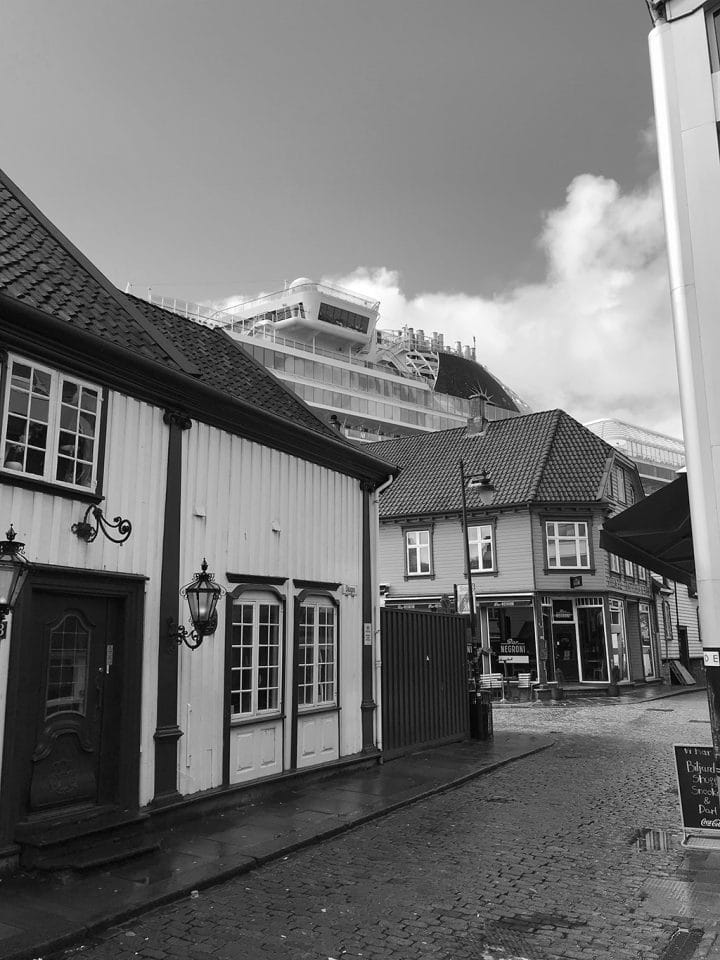
While sipping his beer, a thin Nordic man in oversized rain gear approached Dale and asked if he was alright, on account of Dale being pale and and moist around the edges. Broken from his solipsistic trance, Dale said he was OK. Something about the Norwegian man was comforting, so Dale invited him to sit at the booth.
“My name’s Odd Sigve Tengesdal.”
“Dale. Pleasure to meet you. Can you say your name again for me?” Dale wanted to get the pronunciation right.
“Odd Sigve Tengesdal. It means tip-of-the-spear.”
“Why’d your parents name you that?” Dale asked.
“Because my family sacrificed war prisoners in the mire near their home a thousand years ago.”
“Oh,” Dale said.
They allowed that fact to settle, let the history leech into the present. After talking about the mundane details of their work, they talked about their families. It turned out they both had uncles who ran drugs up and down their respective countries in the eighties. Dale’s uncle did quaaludes up and down the east coast, while Odd’s carted LSD from Oslo to Tromsø, with psychedelic pit stops in vibrating fjords and the occasional careenings into Sweden.
Dale described to Odd the panic he’d been feeling since the oil museum. Odd, who had penetrating yet kind blue eyes, listened intently.
“There’s a place you should visit,” he told Dale. It had no official name, but Odd described it as a “museum of therapeutic objects,” which a friend of his operated. Reticent now about museums, Dale asked him what was there, but Odd insisted that he needed to see for himself.
Dale mulled it over in his mind while Odd tore a scrap of paper from a little notebook and wrote down a street name and number. Odd slid it across the table and then the two of them finished their beers in silence.
END OF PART 1
Rob Goyanes is a writer, editor, and musician from Miami, Florida, living in Ridgewood, Queens. His writing has appeared in e-flux journal, Los Angeles Review of Books, and many other places. On his catalogue essay about Tomm El-Saieh for the 2018 New Museum Triennial, The New Yorker art critic Peter Schjeldahl wrote, “That sounds right.”


